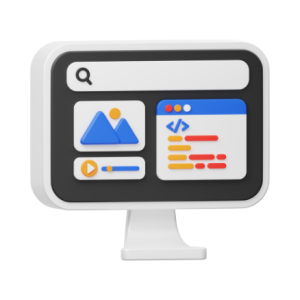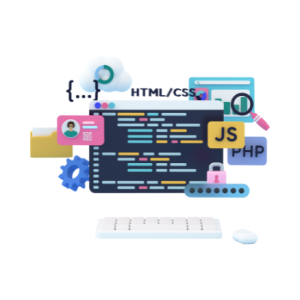In the vast world of software development, two important roles stand out: frontend and backend development. While they both help to create functional and visually appealing applications, they work on different layers of the technology stack and require different skill sets. Understanding the difference between frontend and backend development is critical for anyone interested in software engineering or learning about web development. So, let’s delve into the worlds of frontend and backend development to understand the differences and significance.
Frontend Development
Frontend development, also known as client-side development, focuses on the areas of the application that users interact with directly. In layman’s terms, it deals with the visual and interactive components of a website or application. Frontend developers create engaging user interfaces that provide seamless and intuitive experiences.
Key Aspects of Frontend Development
- HTML: Hypertext Markup Language is essential for all web pages. It organises the content and defines the layout of the information that appears on the user’s screen.
- CSS (Cascading Style Sheets): CSS is used to style HTML elements, which improves the visual appeal of a website by controlling colours, fonts, and layout.
- JavaScript: JavaScript adds interactivity to web pages, allowing for dynamic features like animations, form validations, and responsive behaviour.

- Frameworks and Libraries: Frontend developers frequently use frameworks such as React, Angular, or Vue.js, as well as libraries such as jQuery, to streamline development and improve functionality.
- Responsive Design: Ensuring that the application looks and functions properly across different devices and screen sizes is an important aspect of frontend development.
Backend Development
Frontend development focuses on the user-facing aspects of an application, whereas backend development is concerned with the server-side logic that drives the application’s functionality. It entails database administration, user authentication, and frontend request processing.
Key Aspects of Backend Development
- Server-Side Programming Languages: Backend developers write server-side logic in languages such as Python, Ruby, Java, PHP, and Node.js.
- Databases: Backend developers use databases to save, retrieve, and manipulate data. MySQL, PostgreSQL, MongoDB, and Redis are examples of commonly used databases.
- APIs: Application Programming Interfaces allow communication between various components of a software application, allowing the frontend to interact with the backend.

- Security: Backend developers use encryption, authentication, and authorization to protect the application and its data from unauthorised access and malicious attacks.
- Scalability and Performance: Backend developers improve the application’s performance and scalability to ensure that it can handle a large number of users and requests efficiently.
Frontend vs. Backend Development
|
Aspect |
Frontend Development |
Backend Development |
|
Focus |
User interface and interactions |
Server-side logic and data manipulation |
|
Languages |
HTML, CSS, JavaScript |
Python, Ruby, Java, PHP, Node.js |
|
Interactivity |
Provides user interactivity and experience |
Manages server operations and data processing |
|
Technologies |
React, Angular, Vue.js, jQuery |
Express.js, Django, Flask, Spring |
|
Responsibilities |
Designing layouts, styling, client-side logic |
Managing databases, server-side processing |
|
Data Handling |
Limited to client-side data manipulation |
Involves server-side data management |
|
Security |
Limited involvement in server security |
Implementing server security measures |
|
Scalability |
Focuses on client-side performance optimization |
Ensures server-side scalability and performance |
|
Collaboration |
Collaborates closely with backend developers |
Collaborates closely with frontend developers |
Conclusion
Frontend and backend development are two essential components of the software development process, with each playing an important role in creating successful applications. Backend development is responsible for server-side logic and database operations, whereas frontend development is in charge of the user interface and client interactions. Understanding Frontend vs. Backend development is critical for aspiring developers to make the right decision and for businesses to create high-quality, feature-rich applications that meet their users’ needs.



